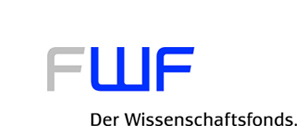Forschergruppe FG5
Multiphoton Experiments with Semiconductor Quantum Dots
FWF Forschungsgruppe

Project Abstract
Project Abstract
Wider research context
Among different quantum information processing (QIP) architectures, photons traveling in free space
or in integrated-waveguide circuits are appealing due to their propagation speed and negligible
decoherence. One of the roadblocks towards practical applications of photonic-based QIP has been the
lack of deterministic photon sources. Semiconductor quantum dots (QDs) can generate single and
entangled photon pairs with high quality and high rates and may provide the ultimate solution to the
“source bottleneck”.
Objectives
This project aims to establish a world-leading photon source platform based on an emerging class of
QDs and use it to demonstrate multiphoton quantum protocols in free-space and waveguide circuits.
To this end, we will combine complementary expertise in QD physics and devices and theoretical and
experimental QIP.
Methods
We will focus on QDs made of GaAs inclusions in an AlGaAs matrix, which have recently shown a
unique combination of appealing features: fast radiative rates of ~5 GHz, capability of generating near
perfectly entangled photon pairs with excellent indistinguishability and ultralow multiphoton
emission probability, as well as wavelength matched to the high-sensitivity range of silicon-based
single-photon detectors.
Innovation
Worldwide substantial efforts are necessary to increase the brightness and indistinguishability of the
photons emitted by multiple sources. We will tackle these challenges (i) by integrating our QD sources
into tunable photonic structures designed to feature broadband photon-extraction-efficiency and
Purcell enhancement and (ii) by tailoring coherent excitation and control schemes to our QDs. In
parallel to the progress in source performance, we will design few-qubits applications with increasing
complexity and implement them in high-performance photonic chips. These will include boson
sampling, fusion gates, and cluster-state generation for secure quantum computing. New theoretical
tools will be developed and exploited to verify the generation of multipartite entanglement in the
experiment and assess the role of residual imperfections.
With this project, we will carve out the ultimate limits of photonic QIP with this technology.
Added value
This vertical collaboration assembles all the required expertise to get from the raw material to
photonic QIP. Rather than working on independent problems, we will concentrate our joint efforts on
our main goal. We will work hand-in-hand in a tight feedback-loop to make sure that the requirements
posited by theory can be met by the experimentalists at every stage, or to find alternative routes if
some parts do not work as intended.
